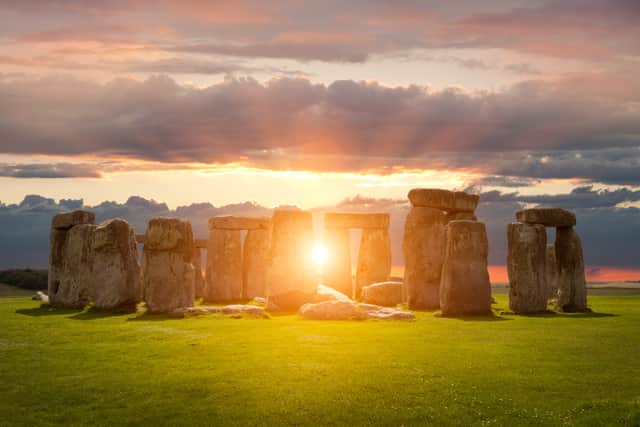When do the lighter nights return in the UK? Date the days get longer, and when is summer solstice 2022
and live on Freeview channel 276
Winter solstice is officially upon us, bringing with it the day with the least amount of sunlight and the beginning of winter. With the dark and cold nights in full swing, many people will be dreaming of summer when the sun doesn’t set at 4pm.
According to Royal Museum Greenwich, the UK’s capital London will see 7 hours, 48 minutes and 42 seconds of daylight. The sun is expected to rise at 8:03am and set at 3:53pm.
Advertisement
Hide AdAdvertisement
Hide AdThis will differ across places in the UK, for example the further north you go the amount of daylight gets smaller. People in Edinburgh will see just 6 hours, 57 minutes and 37 seconds of daylight, with a 8.41am sunrise and 3.39pm sunset.
While, winter solstice may bring the darkest day it will also mean that the days can only get lighter from here. So, when can you expect the lighter nights to return? Here’s everything you need to know.
When does it start getting lighter?
Winter solstice takes place on December 21, meaning from December 22 onward, the UK will then experience more daylight, which means brighter mornings and lighter evenings for longer.
The lighter nights will slowly return in increments until June 21, 2022 which is when the Summer Solstice takes place, also known as the longest day of the year.
Advertisement
Hide AdAdvertisement
Hide AdWhat is the Winter Solstice?
The winter solstice is also known as the hibernal solstice, and occurs when either of Earth’s poles reaches its maximum tilt away from the sun. In the Northern Hemisphere the Winter solstice marks the 24 hour period with the fewest hours of daylight. The solstice also marks the first day of winter in the astronomical calendar, whilst in the meteorological calendar, we are already three weeks into winter.
The summer solstice falls around June 20 every year and has become synonymous with Stonehenge and paganism, it denotes the longest day of the year and first day of summer under the astronomical calendar.


What is the Summer solstice?
Summer solstice is the longest day of the year for people living in the Northern Hemisphere of the earth. Meanwhile, it is the shortest day of the year for those living in the Southern hemisphere.
Summer solstice is also known as midsummer, and festival solstice across the globe. However, no matter the name it goes by, the event occurs when one of Earth’s poles has its maximum tilt toward the sun.
Advertisement
Hide AdAdvertisement
Hide AdHow is the Summer solstice commemorated?
For the majority of people and cultures across the world the celebrations of the summer solstice involve enjoying the sunshine, being out in nature, sumptuous feasts, bonfires, singing and dancing to traditional songs.
People throughout the world will travel to iconic destinations to catch the sunrise or sunset of the summer solstice. Some of the most popular spots in the UK to celebrate the summer solstice include Stonehenge, Glastonbury Tor, Ben Nevis, Bryn Celli Ddu, Gwynedd and the Giant’s Ring.
What place will have the most daylight?
Places in the Northern Hemisphere will see the most hours of daylight. In 2022, Alaska saw up to 19 hours of sunlight. Countries like Iceland experienced up to 21 hours of sunshine this year, making it the place with the longest day in the world.
Countries like Tokyo saw up to 14 hours of daylight. Places across the UK saw up to 16 hours of daylight. Scotland’s very own Shetland Islands saw the most daylight hours this summer solstice, with a forecast of 19 hours of daylight.
